#Detroit ’67
Explore tagged Tumblr posts
Video
youtube
BLAC Detroit |with Jamon Jordan - What Happened in the 1967 Rebellion in Detroit
Black Scroll Network founder and historian Jamon Jordan, takes us on a tour and shares stories from the 1967 rebellion.
#youtube#What Happened in the 1967 Rebellion in Detroit#Detroit#1967 Detroit Rebellion#67 riot#12th street#Black Communities Destroyed#White Flight#Destruction of the Black Community of Virginia Park
6 notes
·
View notes
Text

USS DETROIT (AOE-4) is flanked by USS SAN JACINTO (CG-56), left, and USS JOHN F. KENNEDY (CV-67) as the ships conduct an underway replenishment during Operation Desert Storm in the Red Sea.
Photographed by PH3 Falkenhainer on February 1, 1991.
NARA: 6467907
#USS Detroit (AOE-4)#USS Detroit#Sacramento class#fast combat support ship#support ship#USS San Jacinto (CG-56)#USS San Jacinto#Ticonderoga Class#Guided Missile Cruiser#Cruiser#USS John F. Kennedy (CV-67)#USS John F. Kennedy#Aircraft Carrier#February#warship#ship#Operation Desert Storm#1983#united states navy#us navy#navy#usn#u.s. navy#my post#Red Sea
65 notes
·
View notes
Text

3x3 for yesterday :3
3 notes
·
View notes
Note
5, 7, 18, 27 for the music ask
Yay! This is the first time someone has sent me an ask!
5: A song that needs to be played LOUD
This is one of my go-to "Blast songs while wearing headphones and cleaning or cooking" songs
youtube
7: A song to drive to
I love this whole album! I have several albums I like to listen to on long drives and this is one of them.
youtube
18: A song from the year that you were born
The top hit single of the year! There was actually quite a few big hits from this year.
youtube
27: A song that breaks your heart
I really, really love Arcade Fire. They got me through some rough times (high school and the years following)
youtube
Thanks for sending me this! It was fun!
#music ask#asks#music#youtube links#shadient#tyler the creator#detroit 67#sam roberts#sam roberts band#whitney houston#and i will always love you#arcade fire#sprawl ii
0 notes
Text

... when cars were art ...
On this day in 1966, the Chevrolet Camaro was first revealed at a press preview in Detroit.
Here’s a favourite: Debbie Harry with her beaten-up ’67, which she remembers with real fondness. Debbie described it as “an inheritance from her Mother.”
" I used to have a car on my own "
#when cars were art#chevrolet camaro#camaro coupe#pony car#debbie harry#blondie#i'm on e#listen to music#Spotify
12 notes
·
View notes
Text
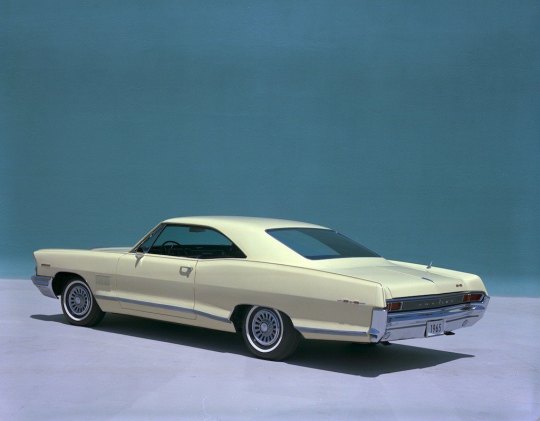
10 Forgotten Muscle Cars That Deserve to Be Restored
by James Derek Sapienza
Source: General Motors We all know the story; it started in 1964 with the Ford Mustang. No, wait — I mean the Plymouth Barracuda. Or the Pontiac GTO. Or was it earlier with the Pontiac Catalina SD? The ’50s Dodge D-500 maybe? Debating the origin of the muscle car is like debating over the first rock and roll record; everyone you talk to has a different opinion, and no one is exactly wrong. Let’s just say that by the early ’60s, a generation coming of age fell in love with high-performance midsize cars coming out of Detroit, and for a few brief years, performance ruled the day. Naturally, the good old days seem to look better with each passing year, and as the book was written on the muscle car, a fair amount of contenders fell by the wayside.

1. 1964 Studebaker Avanti R3
Source: Auctions America The Avanti isn’t generally counted among muscle cars, but then, Studebaker was never exactly considered a performance powerhouse to begin with. But the fiberglass Avanti had a long hood, short rear deck, and 289-cubic-inch V8 a full two years before the Ford Mustang did. In 1964 (after production officially ended), Studebaker bored out nine V8s to 304 cubic inches, slapped a Paxton supercharger on them, and dropped them into remaining Avantis. The result was a 171-mile-per-hour rocket, which the company claimed made it the fastest production car in America. This R3 was sold by Auctions America in 2010 for $96,250. With the collector market being what it is today, good luck finding one this cheap ever again.
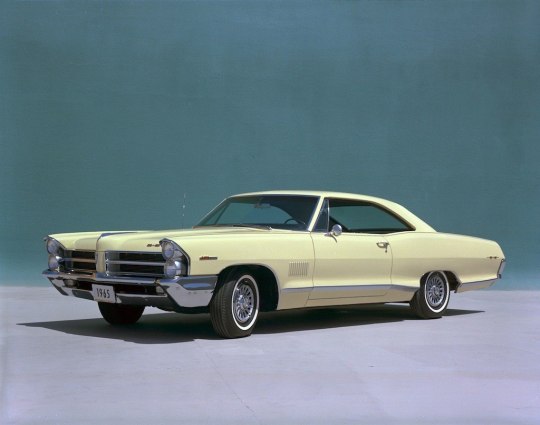
2. 1965 Pontiac 2+2
Source: General Motors As far as classic muscle cars go, the ’65-’67 GTO is remembered to be about as big as they came. But with the success of the GTO, Pontiac wanted to take its go-fast formula to an even bigger car, which became the ’65-’67 2+2. Based on the full-size Catalina two-door, the 2+2 had its own unique 338-horsepower 421-cubic-inch V8, and in High Output guise, power jumped to 376 ponies, which when tuned right could rocket from zero to 60 in a mind-bending 3.9 seconds. Bigger, plusher, and often faster than its smaller stablemate, the 2+2 deserves a lot more love from speed freaks.

3. 1964 Mercury Comet Cyclone
Source: Ford For ’60s Ford products, the Mercury Comet was about as basic as they came. Closely based on the Ford Falcon, the ’64-’65 Comet could be livened up with Ford’s famous 289-cubic-inch V8. But for those who wanted more from their Mercurys, Ford built 50 Comet Cyclones for the dragstrip, complete with fiberglass hood, fenders, doors and front bumper, plexiglass windows, and the same 425-horsepower 427 V8 found in the Shelby Cobra. In ’66, Mercury introduced the production Comet GT with the 390 V8, and while they’re capable compact muscle cars, they couldn’t hope to match the insanity of their big block predecessor.

4. 1968 Ford Ranchero 500
Source: Ford It’s been long overshadowed by Chevy’s iconic El Camino, but the Ford Ranchero was America’s first car-based Ute. And while Chevy was offering the 396 V8 in its muscle trucks, Ford upped the ante in ’68 and made its restyled Ranchero available with a 335-horsepower Cobra Jet 428 V8. Unfortunately, a lack of weight over the rear wheels made the hot Rancheros a handful to drive, so very few were built with Ford’s biggest motor. While it seems like every surviving El Camino happens to be an SS model, we can’t remember the last time we’ve seen a Cobra Jet Ranchero. Come to think of it, we can’t remember the last time we’ve seen any Ranchero.

5. 1969 Chevy Kingswood 427
Source: General Motors Back in the ’60s, you could order virtually any option you wanted on a car, and companies would actually build it for you. So imagine you’ve got a growing family, and your Corvette just can’t handle them. What to do? Buy a Chevy Kingswood station wagon with Rally wheels, hideaway headlights, seating for seven, and the same 390-horsepower V8 found in your ‘Vette. Only 546 buyers opted for the big V8 in ’69, but a number of 427 Kingswoods spent the next decade making their mark on the drag strip.

6. 1969 Oldsmobile Rallye 350
Source: General Motors When gearheads think of outrageous muscle cars from 1969, the Pontiac GTO Judge easily sits at the top of the list. But while the Judge has gone on to become a legend, Oldsmobile’s analog, the Rallye 350, is all but forgotten. Like the Judge (at least at first) it was offered in one outrageous color (Sebring Yellow), had color-matched wheels and bumpers, a spoiler, and a fiberglass hood. And compared to Olds’s top-dog 442, the car’s 310-horsepower 350-cubic-inch V8 made it significantly lighter, allowing it to scramble from zero to 60 in seven seconds and run the quarter mile in a respectable 15.27 seconds at 97 miles per hour. Just 3,500 Rallye 350s were built, making it one of the more obscure muscle cars to ever come from GM.
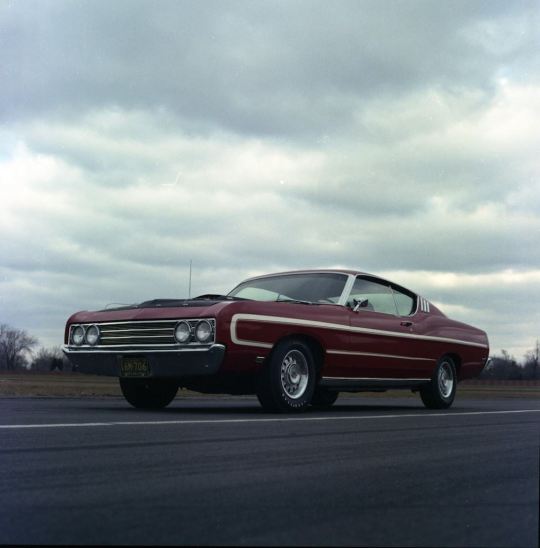
7. 1969 Ford Torino Talladega
Source: Ford Half a century on, the Plymouth Roadrunner Superbird and Dodge Daytona get all the love when it comes to NASCAR homologation specials. But in 1969, Ford tried its hand at aerodynamics too and built the Torino Talladega. Starting with a Torino Sportsroof, Ford worked with the Holman-Moody race shop to design a sleeker, longer front clip and rear fascia for the car. The Talladega was honed in the wind tunnel — a relative novelty for the era — and powered by the 429-cubic-inch V8 found in the Boss Mustang. Production was over by March; Ford only built 754 of them and they were barely advertised, but the slippery cars dominated during the ’69 season, winning 29 races. In 1970, however, the 200-mile-per-hour Superbird ruled NASCAR, and the Talladega’s time in the spotlight was over. Today, the Talladega (and near-identical Mercury Cyclone Spoiler II) are bargains on the collector market compared to the beak-nosed Mopars.
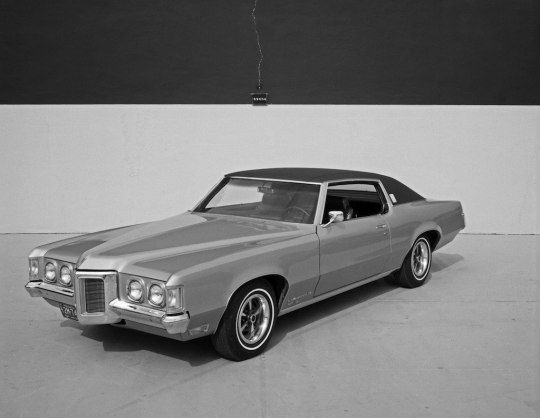
8. 1969 Pontiac Grand Prix SJ
Source: General Motors The second-generation Grand Prix is largely remembered for its role in popularizing the Personal Luxury Coupe segment, but in its early days, it was one of the hottest cars on the street. With a long hood (the longest hood of any production car in ’69, in fact) and short deck, the Grand Prix was available with Pontiac’s 390-horsepower 428-cubic-inch V8, allowing it to scramble from zero to 60 in 6.5 seconds and run the quarter mile in 15 seconds at 97 miles per hour. Its combination of luxury and power made it the Grand Prix massive hit for Pontiac; within a few years, any semblance of performance would be gone.
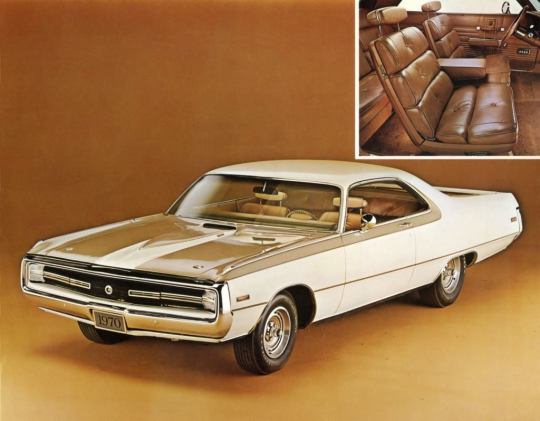
9. 1970 Chrysler Hurst 300
Source: Fiat Chrysler Automobiles As early as 1970, Chrysler die-hards were feeling nostalgic for the 300-letter series, which ended in 1965. The 300-series carried on, but performance had taken a back seat as mid-sized muscle cars had picked up the go-fast mantle. Chrysler tried to recapture the magic for ’70 by outfitting a 300 coupe with the interior from an Imperial, a fiberglass hood and decklid, a 375-horsepower 440-cubic-inch V8, and a Torque-Flite automatic to handle all that power. At 18.5 feet long and 4,400 pounds, the big Chrysler could still make zero to 60 in 7.1 seconds and run the quarter mile in 15.3 seconds. With just 500 built, the Hurst 300s rank as one of the rarest Mopar muscle cars of all time.
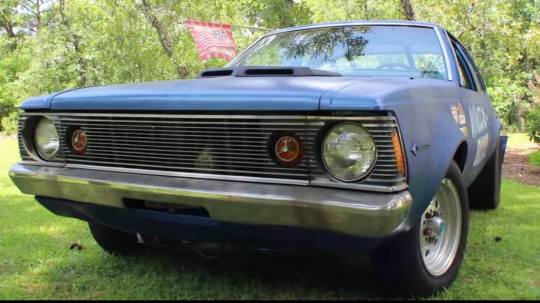
10. 1971 AMC SC/360 Hornet
Source: Chris Andrews Productions via YouTube In the ’60s, AMC’s red, white, and blue Rebel Machine and SC/Rambler muscle cars failed to move the sales needle for America’s last independent automaker, but they sure caused a scene wherever they went. For 1970, the company had introduced the compact Hornet and Gremlin to replace the Rambler, and with them came the SC/360 Hornet. With an available 285-horsepower 360-cubic-inch V8 under the hood, the small Hornet could hit 60 from a standstill in 6.7 seconds, and run the quarter mile in 14.9 seconds at 97 miles per hour. But in 1970, displacement still ruled the day, and despite being cheaper than a Plymouth Duster 340, AMC found just 784 buyers for its smallest muscle car. We think it’s aged remarkably well, and would love to take one of these ’70s-era sleepers to the drag strip.
#car#cars#muscle car#mopar#american muscle#dodge#ford#chevrolet#chevy#amc#american motors#pontiac#pontiac grand prix#chrysler#hurst#olds#oldsmobile#studebaker#automobile#auto#coupe#Mercury
194 notes
·
View notes
Text
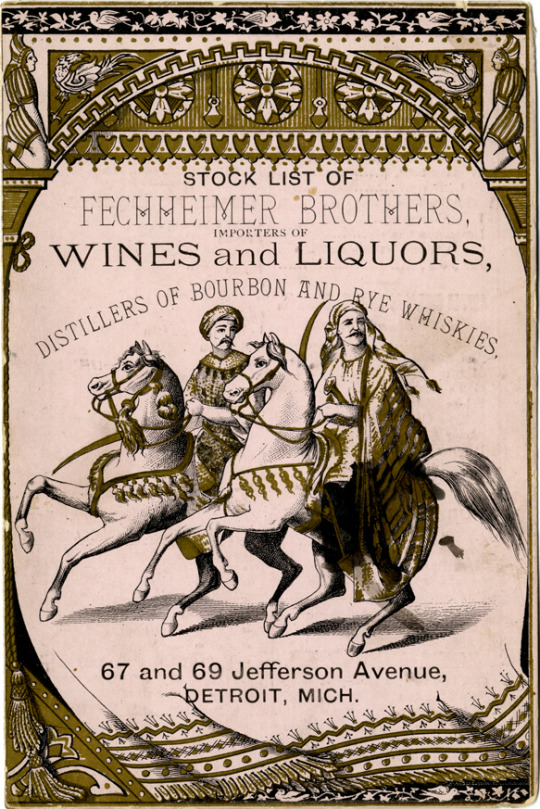

View of the stock list for Fechheimer Brothers wine and liquors. Two men on horseback are depicted on front and back covers. Printed on front: "Stock list of Fechheimer Brothers, importers of wines and liquors, distillers of bourbon and rye whiskies. 67 and 69 Jefferson Avenue, Detroit, Mich." Printed on back: "Morris C. Fechheimer, Herman C. Fechheimer. Established 1859. Straight whiskies in bond a specialty."
Burton Historical Collection, Detroit Public Library
#fechheimer brothers#fechheimer#detroit#detroit history#vintage#vintage advertising#wine and spirits#bourbon#whiskey#detroit public library
40 notes
·
View notes
Text
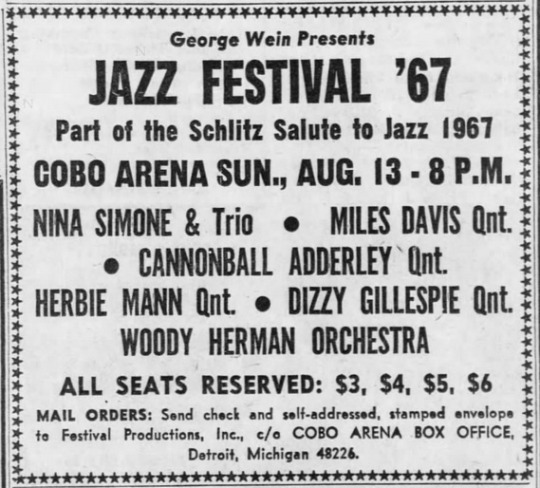
Jazz Festival '67 - Cobo Arena - Detroit
Nina Simone trio
Miles Davis Quintet
Cannonball Adderley Quintet
Herbie Mann Quintet
Dizzy Gillespie Quintet
Woody Herman Orchestra
#jazz#jazz ads#nina simone#miles davis#cannonball adderley#herbie mann#dizzy gillespie#woody herman#1967
24 notes
·
View notes
Text
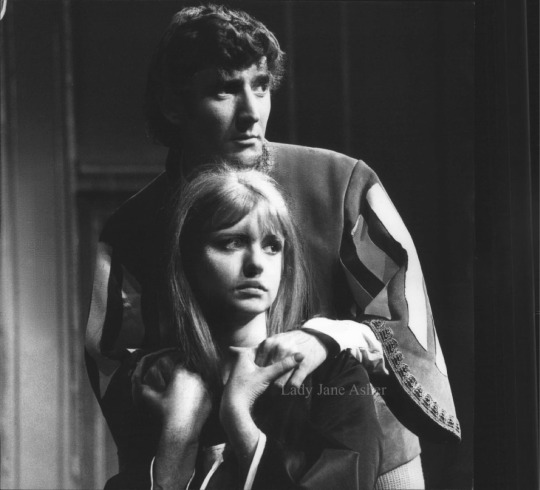
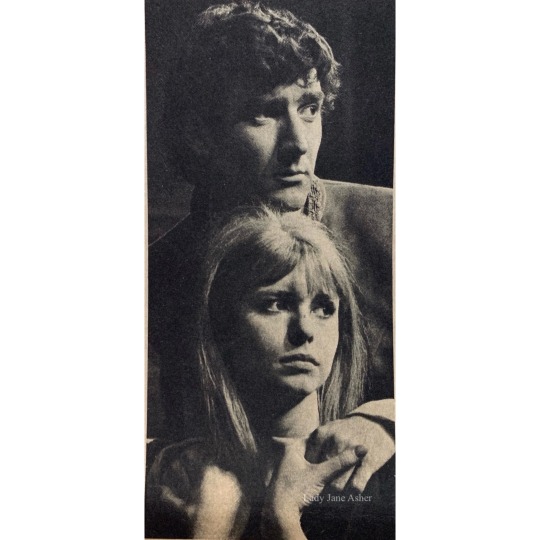
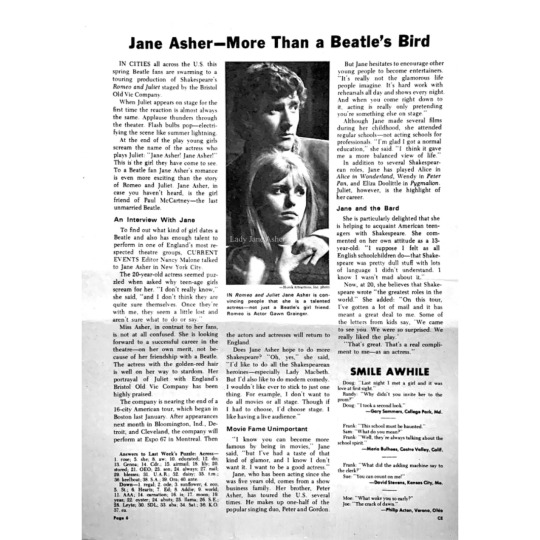
April 5th 2024, happy beloved 78th birthday to the one and only Jane! She’s been my inspiration for around 12 years since I first discovered about her. It’s been a wonderful journey getting to share new pictures I find, my scans, colourisations and accurate information in regards of the pictures I found. May I be able to meet her one day. 🤍
This post will be divided in two, as the picture shown was used for two different newspapers that I scanned therefore the subtle mark on the photos. And you might have seen the photos with my old username so I am sharing them with the new one!
Jane Asher and Gawn Grainger as Juliet Capulet and Romeo in “Romeo and Juliet” presentation while being on tour in the USA, 1967.
First picture is my edition and enhancement from historical picture auction scan, second one is my scan from the newspaper, and third one is the scan of the newspaper.
Jane Asher-More Than a Beatle's Bird
In cities all across the U.S. this spring Beatle fans are swarming to a touring production of Shakespeare's Romeo and Juliet staged by the Bristol Old Vic Company. When Juliet appears on stage for the first time the reaction is almost always the same. Applause thunders through the theater. Flash bulbs pop—electrifying the scene like summer lightning. At the end of the play young girls scream the name of the actress who plays Juliet: "Jane Asher! Jane Asher!" This is the girl they have come to see. To a Beatle fan Jane Asher's romance is even more exciting than the story of Romeo and Juliet. Jane Asher, in case you haven't heard, is the girl friend of Paul McCartney-the last unmarried Beatle.
An Interview With Jane
To find out what kind of girl dates a Beatle and also has enough talent to
perform in one of England's most respected theatre groups, CURRENT EVENTS Editor Nancy Malone talked to Jane Asher in New York City. The 20-year-old actress seemed puzzled when asked why teen-age girls scream for her. "I don't really know," she said “and I don’t think they’re quite sure themselves. Once they’re with me, they seem a little lost and aren’t sure what to do or say”.
Miss Asher, in contrast to her fans, is not at all confused. She is looking the forward to a successful career in the theatre—on her own merit, not because of her friendship with a Beatle. The actress with the golden-red hair is well on her way to stardom. Her portrayal of Juliet with England’s Bristol Old Vic company has been highly praised. The company is nearing the end of 16-city american tour, which began in Boston last January. After appearances next month in Bloomington, Ind., Detroit, and Cleveland, the company will perform at expo 67 in Montreal. Then the actors and actresses will retur to England.
Does Jane Asher hope to do more Shakespeare? "Oh, yes." she said, “I'd like to do all the Shakespearean heroines-especially Lady Macbeth. But I'd also like to do modern comedy. I wouldn't like ever to stick to just one thing. For example, I don't want to do all movies or all stage. Though if I had to choose, I'd choose stage. I like having a live audience.
Movie Fame Unimportant
"I know you can become more famous by being in movies,", Jane said. "but I've had a taste of that kind of glamor, and I know I don't want it. I want to be a good actress." Jane, who has been acting since she was five years old, comes from a show business family. Her brother, Peter Asher, has toured the U.S. several times. He makes up one-half of the popular singing duo Peter and Gordon.
But Jane hesitates to encourage outer young people to become entertainers. "It's really not the glamorous life people imagine. It's hard work with rehearsals all day and shows every night. And when you come right down to it, acting is really only pretending you're something else on stage." Although Jane made several films during her childhood, she attended regular m schools—not acting schools for m professionals. "I'm glad I got a normal education," she said. "I think it gave me a more balanced view of life. In addition to several Shakespearean roles, Jane has played Alice in Alice in Wonderland, Wendy in Peter Pan, and Eliza Doolittle in Pygmalion. Juliet, however, is the highlight of her career.
Jane and the Bard
She is particularly delighted that she is helping to acquaint American teenagers with Shakespeare. She commented on her own attitude as a 13-year-old: "I suppose I felt as all English schoolchildren do-that Shakespeare was pretty dull stuff with lots of language I didn't understand. I know I wasn't mad about it." Now, at 20, she believes that Shakespeare wrote "the greatest roles in the world." She added: "On this tour, I've gotten a lot of mail and it has meant a great deal to me. Some of the letters from kids say “We came to see you. We were so surprised. We really liked the play.�� “That’s great. That’s a real accomplishment to me —as an actress”.
#jane asher#the beatles#60s#beatles girls#actress#lady jane asher#something about jane asher#model#beatles women#1967#romeo and juliet#redhead#red hair#vintage#1960s
14 notes
·
View notes
Text
It’s natural for people to get stories wrong in crisis, and the COVID-19 pandemic is no exception. But we’re still getting key things wrong about COVID-19’s impact on schools after officially exiting the pandemic. Here, I describe three myths about the pandemic’s impact on public education. From my perspective, a combination of sensationalist headlines and political opportunism fuel the first two myths: namely, that public school enrollment has dropped precipitously and that public schools deserve the blame for learning loss. The third myth, in contrast, makes the post-COVID-19 situation in schools seem better than it is—that is, recent changes in test scores accurately reflect students’ pandemic losses.
Myth #1: There was a “seismic” decline in public school enrollment
The first myth is that COVID-19 has gutted public school enrollments. One New York Times headline indicated a “seismic shift” with a subtitle that the “pandemic has supercharged the decline in the nation’s public school system.”
Contrary to popular belief, COVID-19 has only caused a 2% drop in public school enrollments nationally. Some of the latest evidence also suggests no drop at all in cities like Detroit and New York City that were heavily criticized for staying remote so long. By comparison, there was a 15% decline during the mid-1970s-1980s without a pandemic (due mainly to demographic shifts). That’s a real seismic shift—seven times larger than the COVID-19 drop.
Projected enrollments will likely drop by more than two percent in the coming years due to declining birth rates and immigration. Looking at the trend line in district enrollments ten years from now, we may barely notice the COVID-19 years.
In fact, what’s most remarkable is how little COVID-19 altered public school enrollments. Every child in the country was forced out of their school buildings for a time. Parents became more familiar and experienced with the many online tools that allow students to learn from home, and some shopped around for alternatives. If ever there was a chance to reconsider, this was it. Yet, the best analyses suggest only 372,000 students switched to homeschooling or private schools—out of 50 million nationally.
Critics might argue that few switched schools due to a lack of good alternatives, but polls show high satisfaction with public schools during the pandemic. One poll showed 78% of families were satisfied with how public schools handled the pandemic; in another, the figure was 80%.
No, the public school enrollment drop was not seismic. The real concern ought to be that some students might have left, never to return to any form of schooling.
Myth #2: Learning loss was the fault of public schools and unions (and their push for remote learning)
The effects of the COVID-19 pandemic on students’ educational progress are undeniable, particularly in public schools. Test score declines were largest where schools were closed the longest, and public schools were closed more and had less live interaction than private schools. Recent NAEP scores reinforce that scores did not drop as much in private schools as in public schools.
Do public school leaders bear responsibility for what happens in schools? To some extent, yes. People need to take responsibility for their actions. But during the pandemic, what exactly did public schools control?
One thing public schools don’t control is who walks in the door. Private schools have tuition and admission criteria that mean they serve more affluent families, whereas public schools must accept all children residing in their district. One study found that the educational level of private school parents is 1.5 years higher than public school parents. The income disparity is even more astounding—67% higher for private school families. During the COVID-19 pandemic, these differences mattered. We found that students’ race and family income were among the strongest predictors of schools’ instructional mode during the pandemic. One possible explanation is the large difference in COVID-19 vulnerability across groups. Black and Hispanic people had 70% and 100% higher death rates, respectively, than white people. This is reflected in polling data showing that people of color expressed more fear of the virus during the pandemic. It is also reflected in data showing that parents of color were more hesitant about sending their kids back to school in-person. All told, these data suggest that schools were mostly following the lead of parents whose pandemic experiences and preferences around school reopenings differed.
Differences in school staffing also made navigating the pandemic more challenging in public schools. For example, public schools rely more heavily on bus drivers and food service workers than private schools. Even one bus driver diagnosed with COVID-19 could upend an entire day of learning, leading public schools to lean more toward remote instruction.
Of course, a large part of the staffing story was about teachers. Teacher unions received a lot of blame—some of it deserved—for the pace of school reopenings. However, we found that community demographics and politics were more strongly predictive of the timing of school reopenings than the presence of a teachers union. We should remember, too, that unions’ concerns were rooted in a good cause: to protect their members. Over a million people lost their lives from COVID-19, and the majority of deaths occurred in 2021—even after protective equipment and vaccines became available.
So far, I’ve focused on how public schools and unions shaped decisions about instructional mode, but even this presumes that instructional mode was the main driver of learning loss. It certainly played a key role, but evidence also suggests that it was not the only factor at play. Student demographics strongly predicted learning loss even after accounting for instructional mode. And some students seemed to struggle more than usual, regardless of instructional mode. Students may have worried about the pandemic generally and the health of their parents and grandparents, or they may have had to chip in more to support their families during the economic downturn initially triggered by the pandemic. To chalk this all up to instructional mode is to ignore that children lived through an unprecedented social, economic, and health calamity.
It’s no wonder public schools stayed remote longer. They serve students who were at higher risk during the pandemic. Public schools also involve more complex staffing arrangements which were more brittle during the pandemic. Of course, we all could have done better in retrospect. Hindsight is 20:20, and with a once-in-a-century pandemic, foresight approaches blindness. But, no, we can’t blame the public school system and union leaders for student learning loss.
Why, then, are we still getting these stories wrong? I’d argue that we can thank politics—and, specifically, the right’s current focus on expanding private school choice via school vouchers. For example, one prominent voucher supporter acknowledged that they were trying to “build the best surfboard for parents. This [COVID] was the right wave.” In fact, they got two in one—Trump and COVID-19 converged into a single, massive wave. Even before COVID-19, Trump was a vocal critic of public schools, talked frequently about school choice, and appointed the nation’s chief voucher advocate, Betsy DeVos, as secretary of education. Trump plus COVID-19 amplified the drumbeat against public schools and for vouchers.
But not all the headlines were designed to make public schools look bad. One, perhaps accidentally, made them look better.
Myth #3 – The decline in test scores accurately captures the full educational loss
As bad as it seems, the data on student test scores understates what children lost educationally. This is the case for three reasons:
Most of the test results we see pertain only to students (regularly) attending public schools. Tests are generally only taken by students who are in school buildings. However, we know that some students permanently switched to virtual schooling, and that even students who stayed in brick-and-mortar schools are missing class–and perhaps missing sitting for standardized tests–twice as often as before. Since these groups learn at slower rates, this missing data problem is likely inflating average scores.
Test scores mostly capture the material students have learned recently, not over the full course of the pandemic. This is easiest to see with state standardized tests that are aligned to grade-specific standards. The 8th-grade math test, for example, is designed to cover the math that most students take in 8th grade. But, with COVID-19, students missed learning during three academic school years. While some of the lost learning in these three earlier grades will show up in 8th grade, not all of it will. So, when we compare tests in any given grade before and after COVID-19—which is essentially what all the learning loss studies do—we’re likely understating the extent of learning losses.
Test scores do not adequately capture declining mental health and lower value and expectations for education. Test scores provide a limited view of students’ well-being. In a survey we conducted of students in New Orleans before and after COVID-19 (2019 and 2022), we saw a trend toward students being more concerned about their emotional health, putting forth less academic effort, valuing education less, and having lower expectations of college attendance. These will likely have a more significant negative impact on children’s potential in the long run than what test scores are showing.
This understatement of the educational problem isn’t deliberate in the way the sensationalism and politicization of the first two myths appear to be, but the harm of this misrepresentation may be no less consequential.
We have an even bigger problem on our hands than we realize, and current efforts are falling woefully short. The influx of federal ESSER funds to schools, while well intentioned, has proven difficult to spend effectively, especially with ongoing labor shortages and the temporary nature of the funding. Even the most promising strategies, like tutoring, aren’t reaching many students and aren’t designed to address declining mental health and value and expectations for education. Vouchers, meanwhile, actually seem to make the academic problems worse.
I can’t say that I have a magic bullet, but, clearly, we have little chance of tackling these COVID-19-induced difficulties if we don’t better understand and communicate them first.
42 notes
·
View notes
Text
2024-25 Seattle Kraken famous relations
#22 Oliver Bjorkstrand: Son of H.K. Poprad head coach Todd Bjorkstrand and brother of Aalborg Pirater RW Patrick Bjorkstrand. #95 André Burakovsky: Son of D.E.G. Metro-Sterne RW Robert Burakovsky and cousin of Fotballklubben Bodø/Glimt A Samuel Burakovsky. #35 Joel Daccord: Son of Boston University men's hockey goalie coach Brian Daccord and nephew of former S.C. Bern G Tom Daccord. #7 Jordan Eberle: Cousin of former Pensacola Ice Pilots D Derek Eberle & former Greenville Swamp Rabbits C Tanner Eberle. #6 Nils Larsson: Son of former Skellefteå A.I.K. D the late Robert Larsson and brother of former Linköping Hockeyklubb C Hampus Larsson. #24 Jamie Oleksiak: Brother of olympic swimmer Penny Oleksiak. #17 Jaden Schwartz: Brother of Glasgow Clan C Rylan Schwartz & former Yale University women's hockey RW the late Mandi Schwartz. #91 Daniel Sprong: Son of former Rode Adelaars Hertenbosch D Hannie Sprong. #67 Mitchell Stephens: Cousin of Philadelphia Flyers RW Owen Tippett. #9 Chandler Stephenson: Nephew of former Springfield Indians RW Bob Stephenson and cousin of former Detroit Red Wings RW Joey Kocur, former H.K. H.K.M. A.S. Zvolen D Logan Stephenson & Ishockeyklubben Sparta Sarpsborg LW Shay Stephenson. #13 Brandon Tanev: Brother of Toronto Maple Leafs D Chris Tanev. #20 Eeli Tolvanen: Brother of E.K.V. D Joona Tolvanen & E.C. Red Bull Salzburg G Atte Tolvanen.
#Celebrities#Sports#Hockey#NHL#Seattle Kraken#Denmark#Minnesota#Slovakia#Austria#Sweden#Germany#Soccer#Norway#Hockey Goalies#Massachusetts#Canada#Quebec#Switzerland#Saskatchewan#Florida#South Carolina#Alberta#Ontario#National Teams#Races#U.K.#Connecticut#The Netherlands#AHL#Detroit Red Wings
4 notes
·
View notes
Text
Summary: Androids did not feel. His mind was cold metal and white plastic. He was nothing more than a mission. The time was 1207 and Lieutenant Anderson was due to arrive at the station. Connor predicted that there was a 67% chance that Lt. Anderson had not arrived at the station. Some new cases come in that make Connor wonder what deviants really are.
Author: @satirewrites
#official fic poll#haveyoureadthisfic#pollblr#internet culture#fandom culture#fanfic#fanfiction#tumblr polls#fandom poll#the novelist#dbh#no romantic relationships#ao3
6 notes
·
View notes
Note
Who are the Chicago Blackhawks biggest rivals?
Assuming this question is being sparked by @imjustwritingg's newest story, you'll have to ask Morgan who she's chosen, or better yet, just wait and be surprised.
If it's just a random hockey question, under the cut, because yay sports history even though I'm not much of a hockey fan
Historically the Blackhaws have two main rivals: the St. Louis Blues and the Detroit Red Wings.
St. Louis was brought into the NHL in '67 by the former owners of the Blackhawks and Red Wings, with the intention of making them the rival team to the Hawks. They wanted to capitalize on the same rivalry that exists between the Cubs and Cardinals in baseball. If you want some good old hockey fights look up the St. Patrick's Day Massacre 1991.
The rivalry between the Blackhawks and the Red Wings goes back even further. It even predates the NHL and the Original Six (The Blackhawks, the Red Wings, the Bruins, the Leafs, the Canadiens, and the Rangers)Hell, it even predates them being the Blackhawks and the Red Wings. It goes all the way back to the 1920s when they were the Falcons and the Cougars. Detroit and Chicago just don't like each other, especially when it comes to sports.
8 notes
·
View notes
Note
I looked up Bill Mcadoo and wow! There’s only one article of an older man (84 in 2000) with a similar musical history but it doesn’t mention the album or any sort of professional musical career past church and singing groups so idk if it’s the same guy but it was a cool find all the same
from what i understand bill mcadoo was an african american man born in detroit, and he was an activist and socialist in the late 1950s/early 1960s whose music focused on critiques of capitalism, jim crow, racism in the labour movement, and us imperialism (particularly the korean war and us involvement in cuba). later in life he went on to become chairman of the africana studies department at the state university of new york at stony brook and passed away in 2003 of leukemia at the age of 67, which means he would have been born around 1936-37. smithsonian folkways claims he recorded his first album at the age of 23 in 1960, which would place his birth year around that time as well. (source) (source2)
he did an album called "bill mcadoo sings with guitar" in 1960 with folkway records that i really love and you can listen to it as a playlist on youtube here "i don't want no jim crow coffee" "darlin" "i don't want to have a war" and his cover of "fare thee well" are some of my favourite folk recordings ever. pete seeger is the guitarist on this album, i believe they were friends or ran in similar circles at the time
he later released another album called 'bill mcadoo sings vol 2' in 1961, also with folkway records, that can be listened to on youtube here and i'm guessing he left music and went into academia at some point after this, but info about him is pretty scarce i'm afraid.
11 notes
·
View notes
Text


List made by: ON.GOING.CRISIS on Tumblr!
Haven't drawn Connor in a while, and of course, when I do, it's gotta be angsty....oh well- halfway through finishing, I realized how un-gory it was and just added some blue blood - N.67
GoreTober 2024 Day Four: Stitches (Ft.Connor -Detroit Become Human-).
#nightmare67#digital drawing#goretober2024#goretober#blue blood#detroit become human#connor rk800#stitches#androidgore#android#dbh fanart#artists on tumblr
4 notes
·
View notes
Text


Beyoncé RWT Look #67
Louis Vuitton
Worn 1x for the OPULENCE ACT - Detroit
9 notes
·
View notes